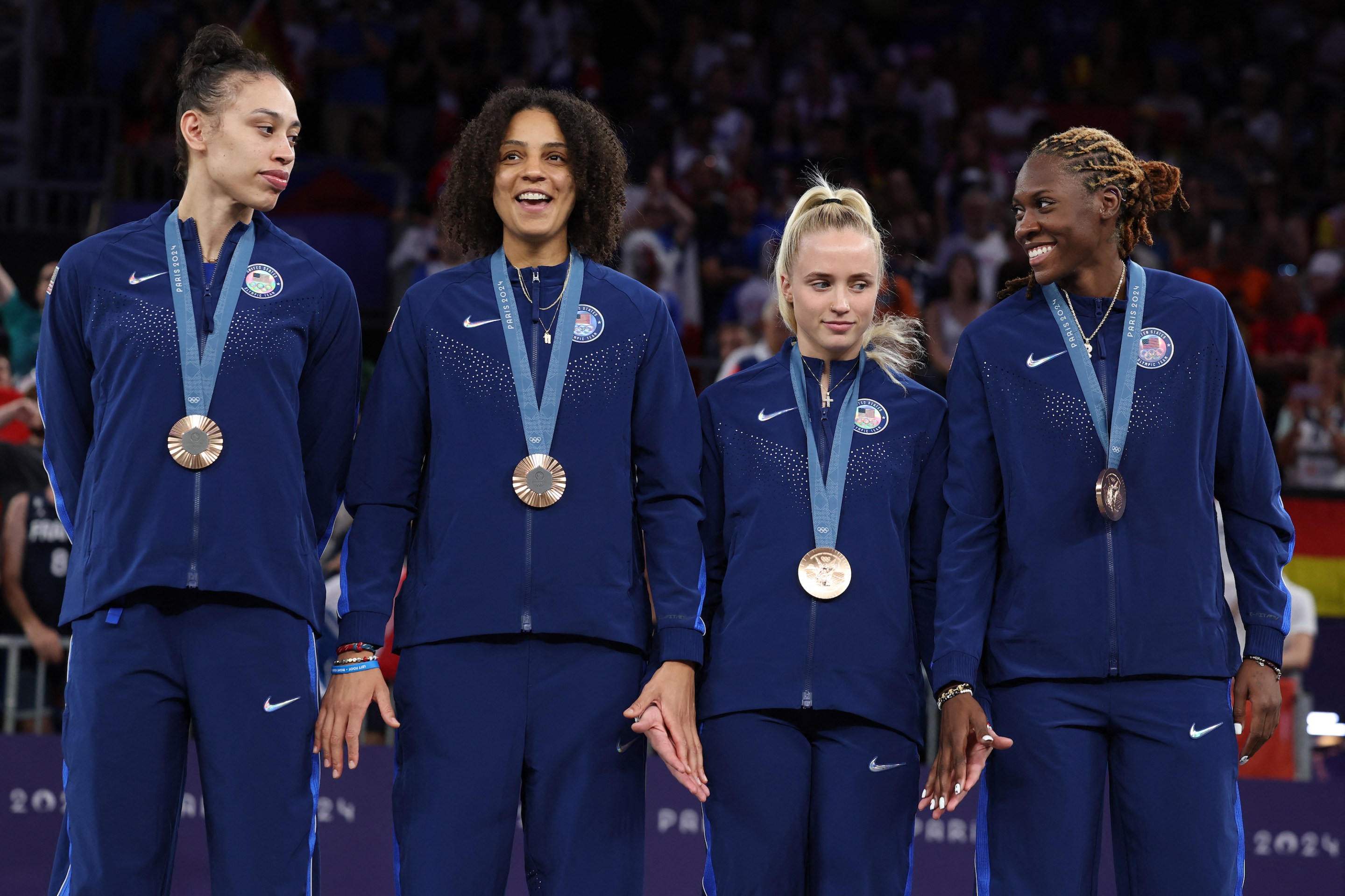Early in Monday's semifinal against Spain, the U.S. women’s 3x3 basketball team ran into a problem that even a healthy Cameron Brink would not have solved. The Los Angeles Sparks rookie tore her ACL weeks before she was set to leave for Paris, an Olympic debut long in the making. Brink paid her dues at several tournaments on the FIBA 3x3 circuit last year; when she was named to Team USA in June, she was so overcome with joy that she cried.
But now USA Basketball was crying: Their mobile, do-it-all rim protector, an ideal 3x3 player on both ends of the court—well, figuratively, since they play half-court—could not do anything at all. All tournament long, Brink’s absence made for a handy excuse, and there was much in the early going that needed excusing. Before the American women rattled off four straight wins to advance from pool play, they lost to Germany, then Azerbaijan, then Australia. Everyone bungled defensive assignments, and the group’s relative lack of experience together showed. Rhyne Howard, a late cut from the 5x5 team, still seemed to be nursing the injury that sidelined her from WNBA action right before the Olympic break. The 5-foot-7 Hailey Van Lith was picked on—a familiar sight.
An imagined version of Brink would have cleaned these mistakes. She papered over Van Lith’s too-smallness and Howard’s fatigue. It didn't matter if some Azerbaijani ladies slashed to the rim at will; she could meet and beat them there. But Brink has a flaw, and it was the very thing that doomed Team USA’s gold-medal chances in the end: foul trouble.
A provincial American’s 3x3 digression: The sport’s math is, frankly, silly. Shots behind the arc are worth two points; everything inside is worth one. That’s all fine, except free throws are still each worth a point, and a foul in the bonus sends an opponent to the line twice. That setup might disincentivize fouling, but it can make officiating feel too consequential in the race to 21 points, especially late. Spain shot just 9-of-31 from the floor—6-of-18 from one and 3-of-13 from two—but ended up in the bonus not even five minutes into the 10-minute regulation period, and went 6-of-7 from the stripe. The U.S. went to the line four times and only converted once. Make your free throws, especially when each one accounts for a bizarrely huge portion of the final score!
If it sounds like I am being a jingoistic whiner, well, correct. I am. Roughly two seconds after the U.S. lost to Spain in overtime—which is played with “first to two points” rules and was ended at the line on a BOGUS foul call—I realized that this game is extremely dumb in every possible way. Dearica Hamby, Brink’s replacement and the victim of the bogus call at the 5:50 mark of this video, agrees. “The referees need to take more classes,” she told USA Today. “Watch some film.”
But the sport’s memory, like each game, is short. Just hours later on Monday, Team USA returned to the court to play Canada in the bronze medal game. If Canada had won, the unfairly persecuted Americans might have been treated to all sorts of lectures about the importance of chemistry and preparing specifically for the very important and sacred sport of 3x3. “This is our side job,” Van Lith told ESPN’s Emily Kaplan in a story about why the U.S. lags behind other countries in 3x3. This Canadian team, meanwhile, spent years training together, and boasts the top three ranked 3x3 players in the world, two of whom are twin sisters. But the U.S. played angry and capitalized on some late Canada turnovers to win, 16-13, and leave Paris with something. All of a sudden, 3x3 seems like a much more sensible sport.






